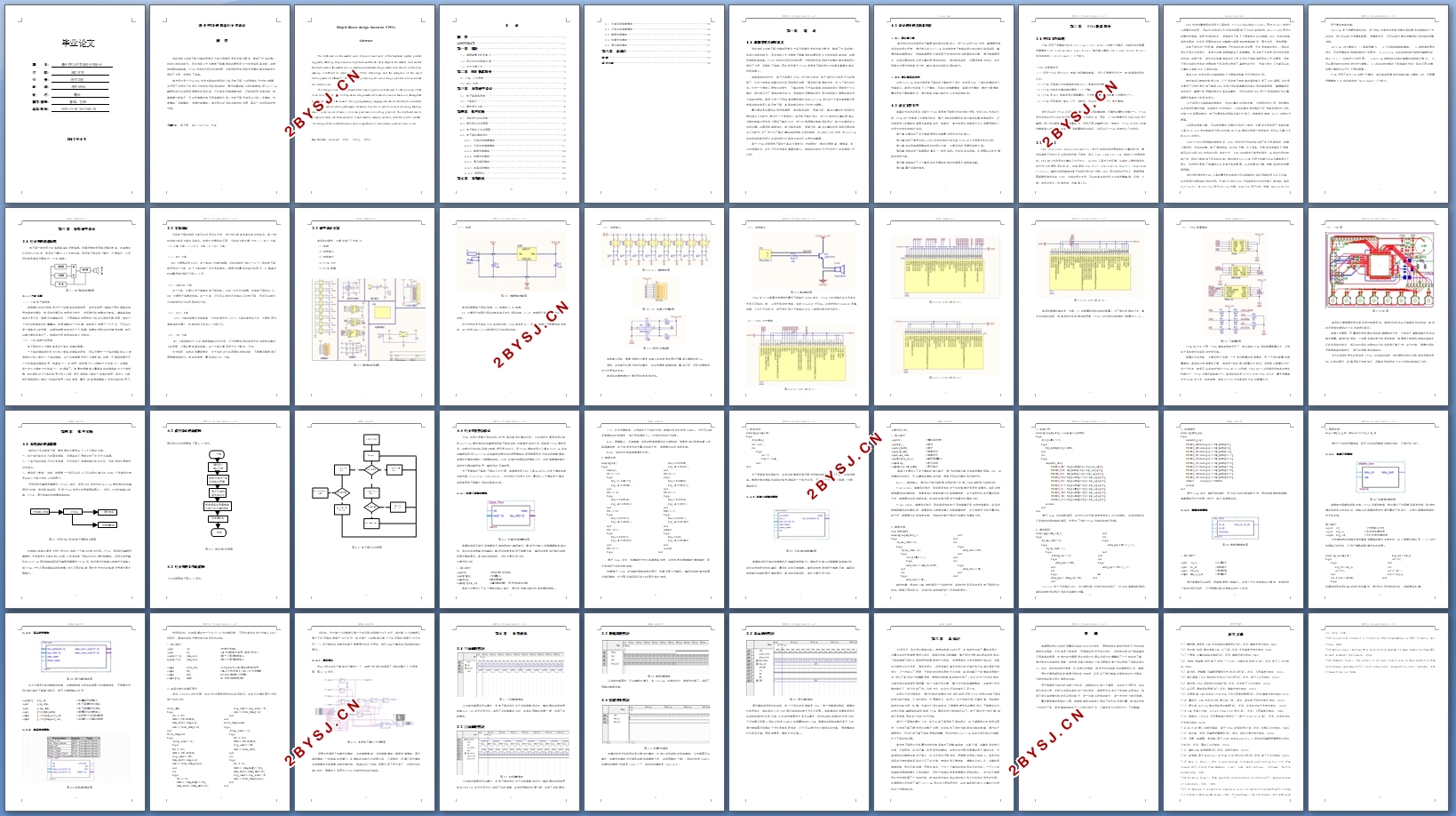基于FPGA的简易电子琴设计
无需注册登录,支付后按照提示操作即可获取该资料.
基于FPGA的简易电子琴设计(任务书,开题报告,论文12000字)
摘 要
当前市场上的电子琴价格较昂贵且产品升级换代更新大部分硬件,影响了产品的推广和适应市场的能力。而且市场上大多数电子琴靠传统的硬件设计方法来实现其功能,这样很难降低其成本。FPGA技术的出现及迅速发展,为利用软件实现较大规模的数字电路设计提供了方便,也降低了成本。
本次设计是一个以EDA技术为基础的简易的八音符电子琴,它的原理在于时钟分频器,并采用了自顶向下的设计方法来实现各项功能的,通过按键的输入来控制声音。用Verilog编程语言可以实现所需要的各项功能,不仅能实现弹演奏功能,还能实现录放音功能,随意演奏一段音乐,可以把演奏的音乐录音播放出来。此电子琴大体可以分成三大模块:发声模块、存储模块、选择控制模块。本次设计的系统功能比较全面,具有一定的现实使用价值。
关键字: 电子琴 EDA Verilog FPGA
Simple flower design based on FPGA
Abstract
The keyboard on the market more expensive and most of the hardware update product upgrades, affecting the promotion of products and the ability to adapt to the market. And most of the keyboard on the market rely on traditional hardware design methods to achieve its function, making it difficult to reduce its cost. FPGA technology and the emergence of the rapid development of software for the use of large-scale digital circuit design provides convenient, but also reduce costs.
This design is a technology-based EDA simple eight-note keyboard, it is the principle of the clock divider, and the use of top-down design methods to achieve various functions, through the key input to control the sound . Verilog programming language can achieve the functions needed, not only to achieve shells performance features, but also to achieve sound recording function, random play a piece of music, you can play music recording play out. This keyboard can be roughly divided into three modules: sound module, memory module, select the control module. The design of the system functions more comprehensive, has a certain practical value in use.
Key Words:Keyboard EDA Verilog FPGA

目 录
摘 要…………………………………………………………………………………………I
ABSTRACT…………………………………………………………………………………II
第一章 绪论…………………………………………………………………………………1
1.1 课题背景及研究意义…………………………………………………………………1
1.2 设计的目的基本内容…………………………………………………………………2
1.3 论文主要工作…………………………………………………………………………2
第二章 EDA技术简介……………………………………………………………………3
2.1 FPGA工作原理……………………………………………………………………………3
2.2 EDA技术………………………………………………………………………………3
第三章 系统硬件设计………………………………………………………………6
3.1 电子琴基本原理………………………………………………………………………6
3.2 方案验证………………………………………………………………………………7
3.3 硬件设计方案…………………………………………………………………………8
第四章 软件实现…………………………………………………………………………16
4.1 系统设计的总思路……………………………………………………………………16
4.2 程序设计的流程图……………………………………………………………………17
4.3 电子琴的工作流程图…………………………………………………………………17
4.4 电子琴各模块设计……………………………………………………………………19
4.4.1 乐谱手动演奏模块……………………………………………………………19
4.4.2 乐曲自动演奏模块……………………………………………………………21
4.4.3 数据选择模块…………………………………………………………………24
4.4.4 按键去抖模块…………………………………………………………………25
4.4.5 显示译码模块…………………………………………………………………26
4.4.6 液晶驱动模块…………………………………………………………………26
4.4.7 顶层设计…………………………………………………………………28
第五章 系统仿真…………………………………………………………………………29
5.1 乐谱手动演奏模块……………………………………………………………………29
5.2 乐曲自动演奏模块……………………………………………………………………29
5.3 数据选择模块…………………………………………………………………………30
5.4 按键去抖模块…………………………………………………………………………30
5.5 显示译码模块…………………………………………………………………………31
第六章 总结语……………………………………………………………………………32
致谢……………………………………………………………………………………………33
参考文献………………………………………………………………………………………34
